Routines for Synthesizing and Organizing Ideas (Chapter 5) continued… (part 1 here)
4) Headlines (Summarizing, capturing the heart) – Quick summaries of the big ideas or what stands out

I like this routine because it can be short and sweet or extended to a longer, collaborative activity. It originally was used as a way to wrap up PD meetings, allowing groups a succinct way to share without further discussion (good idea!). Individually or in pairs, give students time to create a headline that captures their new learning. Facilitating this work is important so the students create headlines that capture the learning and not just a title for an activity. For example, “Exponential Patterns: Predictable or Not” speaks to what was learned while “Investigation of Exponential Growth” describes the activity.
Then they share their headline and its meaning (their reasoning) with a small group. After the small groups share, post the headlines together and prompt students to find themes. It’s really important to emphasize that the goal is not a clever headline, but a forum to gain different perspectives on what was learned. One headline can’t capture everything, but collectively the big ideas will surface. In a whole class discussion the teacher can either ask students for the story behind their headline, or ask the class what another student’s story might be, then let the student that wrote the headline add anything that was missed.
A few examples/ideas that will work in a math class:
- Students write the “words behind the headline” on the back of the paper to give the teacher clearer insight into the student’s thinking. This should be limited to a couple sentences to keep the activity relatively short.
- Triads create a few headlines, then choose one to fine tune and add to the class headlines. While facilitating the teacher asks students to explain why they chose that one and not the other to reveal why they see that as most important.
- Use after hands-on activities or labs to ensure they discovered the big idea.
- Create a headline for a state test question to help reveal how they might solve the problem.


5) The 4C’s (Connection making, identifying key concept, raising questions, and considering implication) – A text-based routine that helps identify key points of complex text for discussion; demands a rich text or book. [Simplified vocabulary for the 4C’s – draw the connection they made, what they didn’t agree with, what was most important to them, when they had learned something new or important]
 Math doesn’t easily lend itself to complex texts, but I can think of a few times to use this. I’m going to show a data video and this routine could help us debrief. Also, in How Not to be Wrong: The Power of Mathematical Thinking by Jordan Ellenberg I came across his response to the common question, “when will I ever use this?” I found it pretty inspiring. I’m going to have the students read it this year and I’ll use the 4C’s as a way to debrief this article.
Math doesn’t easily lend itself to complex texts, but I can think of a few times to use this. I’m going to show a data video and this routine could help us debrief. Also, in How Not to be Wrong: The Power of Mathematical Thinking by Jordan Ellenberg I came across his response to the common question, “when will I ever use this?” I found it pretty inspiring. I’m going to have the students read it this year and I’ll use the 4C’s as a way to debrief this article.
PD – Another suggestion is to use this as a means to lead discussions of professional readings.
6) The Micro Lab Protocol (Focusing attention, analyzing and reflecting) – Can be combined with other routines and used to prompt reflection and discussion

I’m really looking forward to using this routine!! This is a useful structure in directing discussions to ensure equal participation and that everyone will contribute. Students learn how to be better listeners and how to build on another’s ideas. Love it!
They provided several math examples for this routine =)
- After an experiment or lab, this can be used as a summary. Give the students 5 minutes to review the lab, look at notes, and questions, then run the Micro Lab
- Give groups of students a set of problems that are different but related (e.g., functions or transformations). They distribute the problems among themselves and they have 10 minutes to work on it. Then during the Micro Lab they explain what they did, why they did it that way and where they got stuck or confused. The silence can be used for note taking in this case.
- Reflection prompts for Micro Lab: How are you becoming more accomplished as a mathematician? Where do you want to improve?
The teacher that used Micro Lab said that it led to collective problem solving and better math talk. The discussions that followed showed insight and students made connections between the problems in the set. This makes me even more excited to try it out!
A couple of suggestions – The more time that is given to first reflect on paper to the questions, the better the discussions will be. Be strict with the time limits and silence. Debriefing about the silence is important. “The purpose of silence is to take in what was just said and to recent, getting ready to hear the next speaker a pair of fresh ears.” p.150
PD idea – use Micro Lab to facilitate group reflection on a strategy. For example, “how is your classroom changing as a result of your work with these ideas?”
7) I Used to Think…, Now I Think… (Reflecting and metacognition) – Used to help learners reflect on how their thinking has shifted and changed over time
This is a reflective routine that focuses attention on the thinking more than the activity. This routine can be used when they’ve had a chance to confront misconceptions or shift their thinking in fundamental ways. I bet this could be great with student portfolios to have the students refer to their past work and recognize growth. I’ve been focusing a lot on open response questions, trying to shift how my students think and feel about these problems. This could be a good way to reflect on how they used to approach these problems after I’ve taught them to use our open response protocol.
The authors suggest that when introducing this routine the students should share out as a whole group to model how to explain their thinking with guiding questions from the teacher. Once they get used to explaining their reasoning then this could be used as a think-pair-share.
“…development of understanding is not just an accumulation of new information but often results in changes of thinking.”
**I would love to hear if you have used these routines OR if you have any ideas of what math topics for which they could work well.**
(Note: This is the second of two posts that detail one-third of the ‘Thinking Routines’ outlined in Making Thinking Visible by Ron Ritchhart, Mark Church and Karin Morrison. After each number is the title of the Thinking Routine followed by the ‘Key Thinking Moves’, then ‘Quick Notes and Descriptions’. All of this information is directly quoted from the book Table 3.1 Thinking Routine Matrix. Then are the details of the routine and questions to accompany it. Finally, in italics, is a brief brainstorm of how I thought I might use this in a math classroom and/or in math department meetings.)







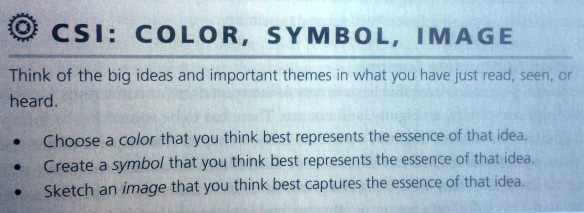
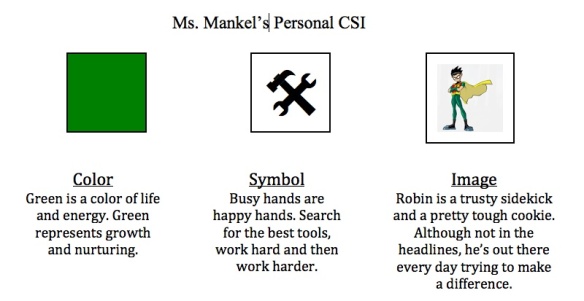
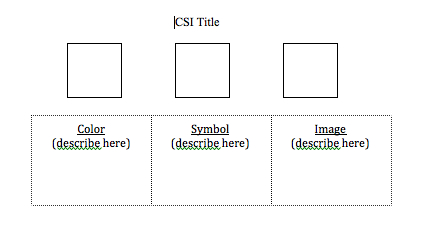
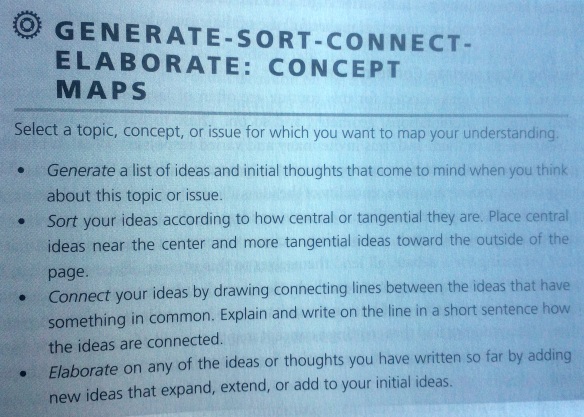
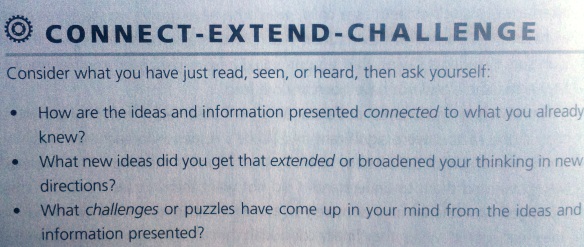
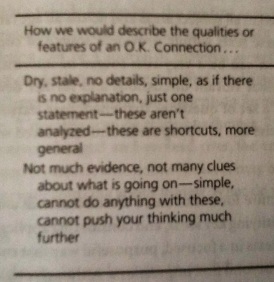
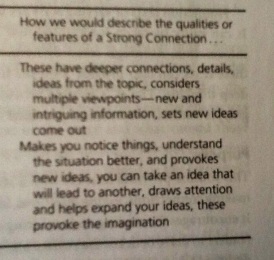
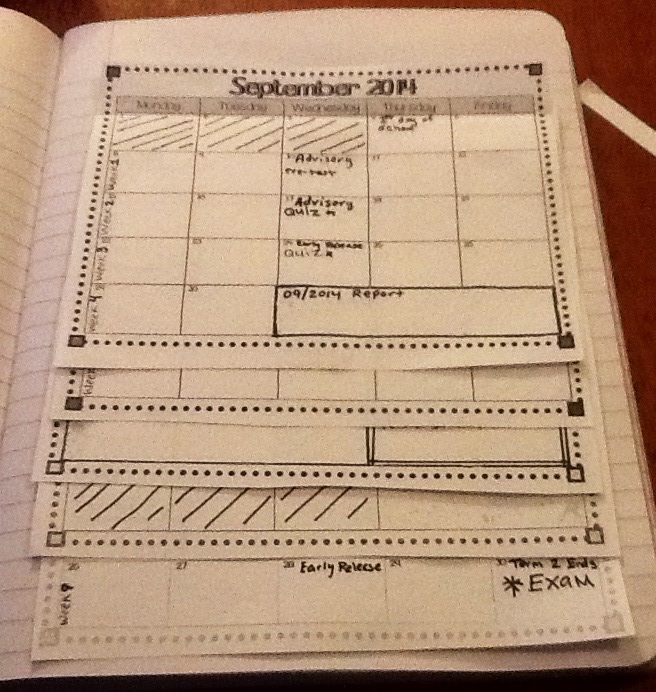
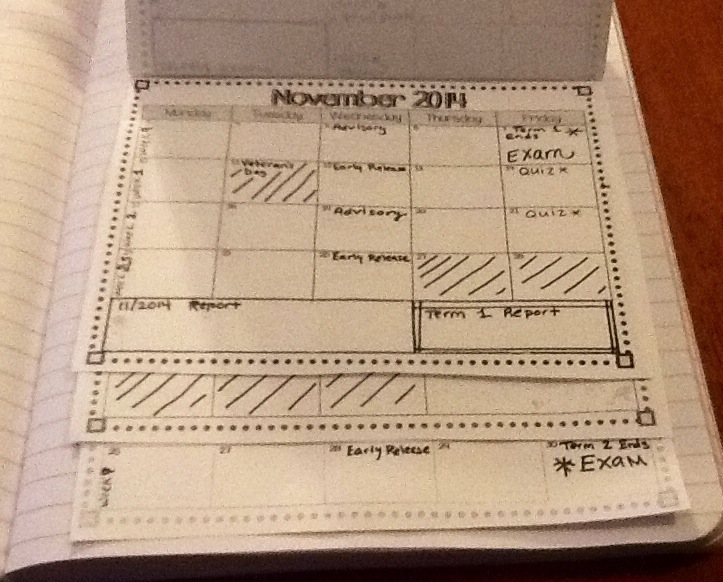

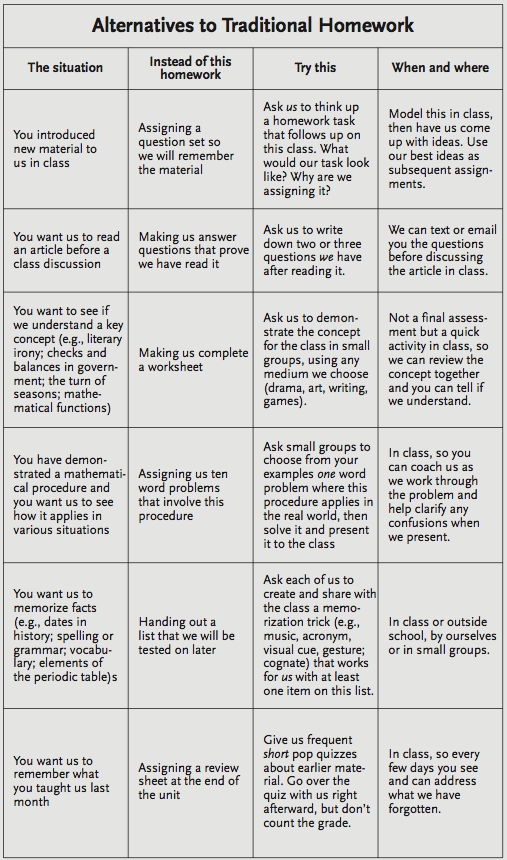





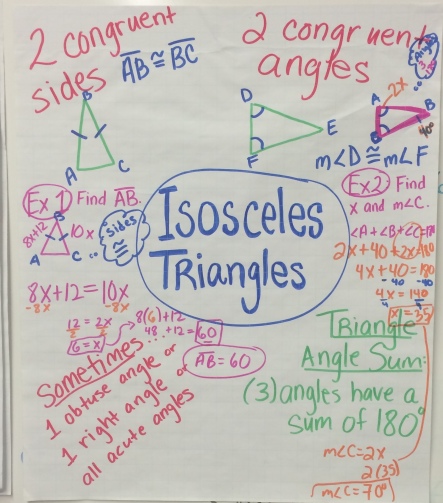 I normally would have focused only on big ideas and wouldn’t have added the examples to an anchor chart. Yet the discussion led to a request for an example, so this may not be but it did the trick.
I normally would have focused only on big ideas and wouldn’t have added the examples to an anchor chart. Yet the discussion led to a request for an example, so this may not be but it did the trick.